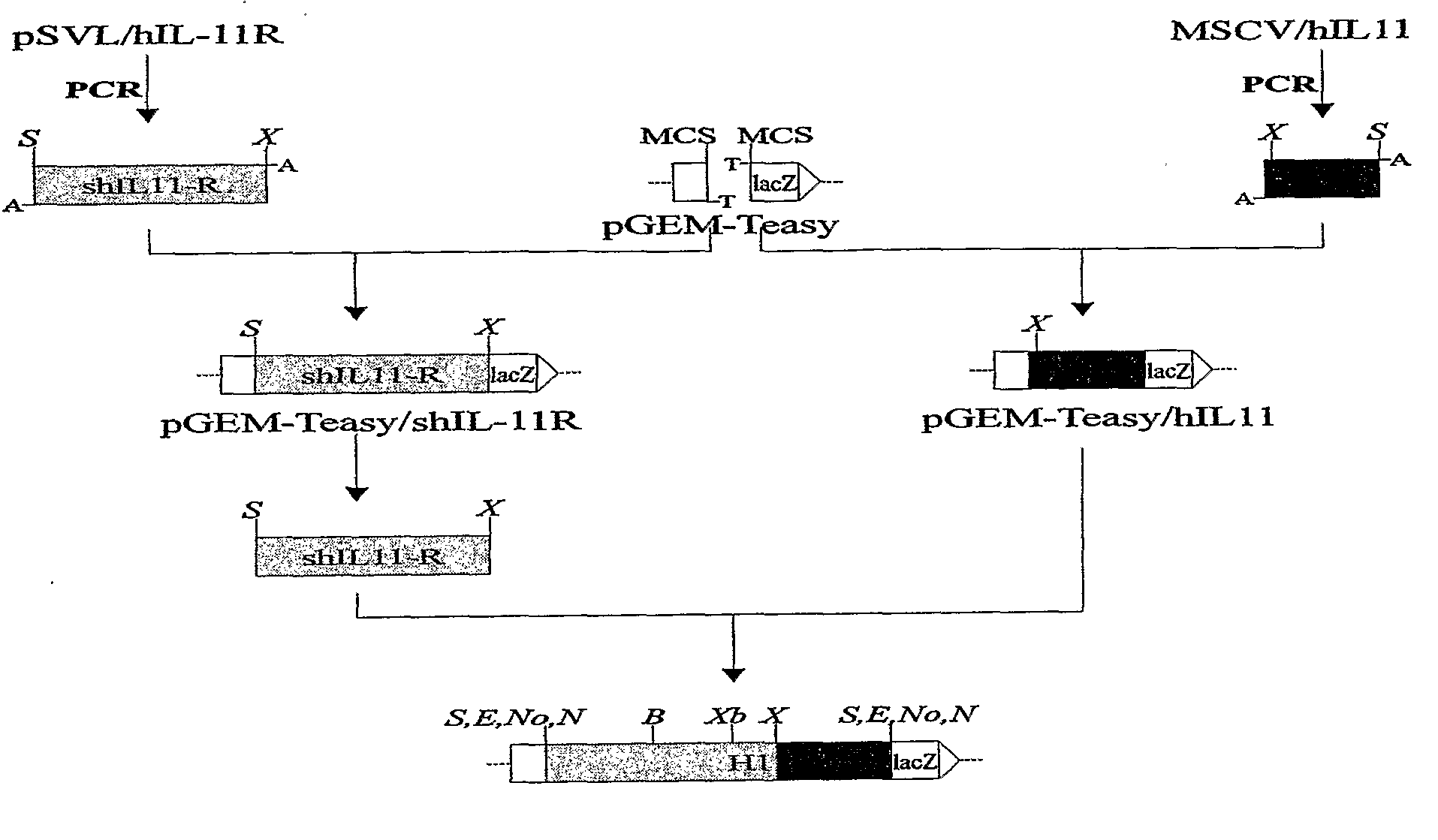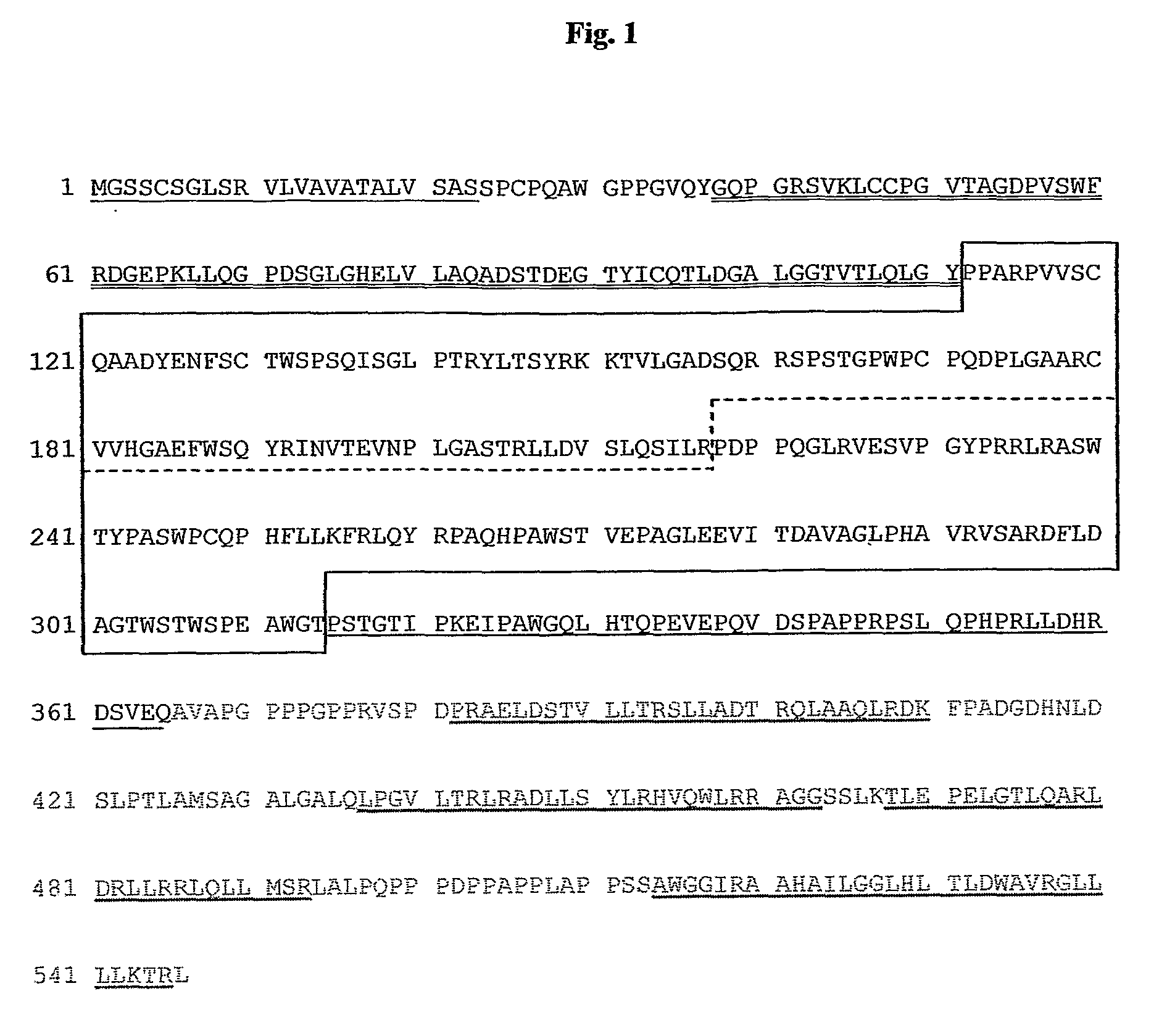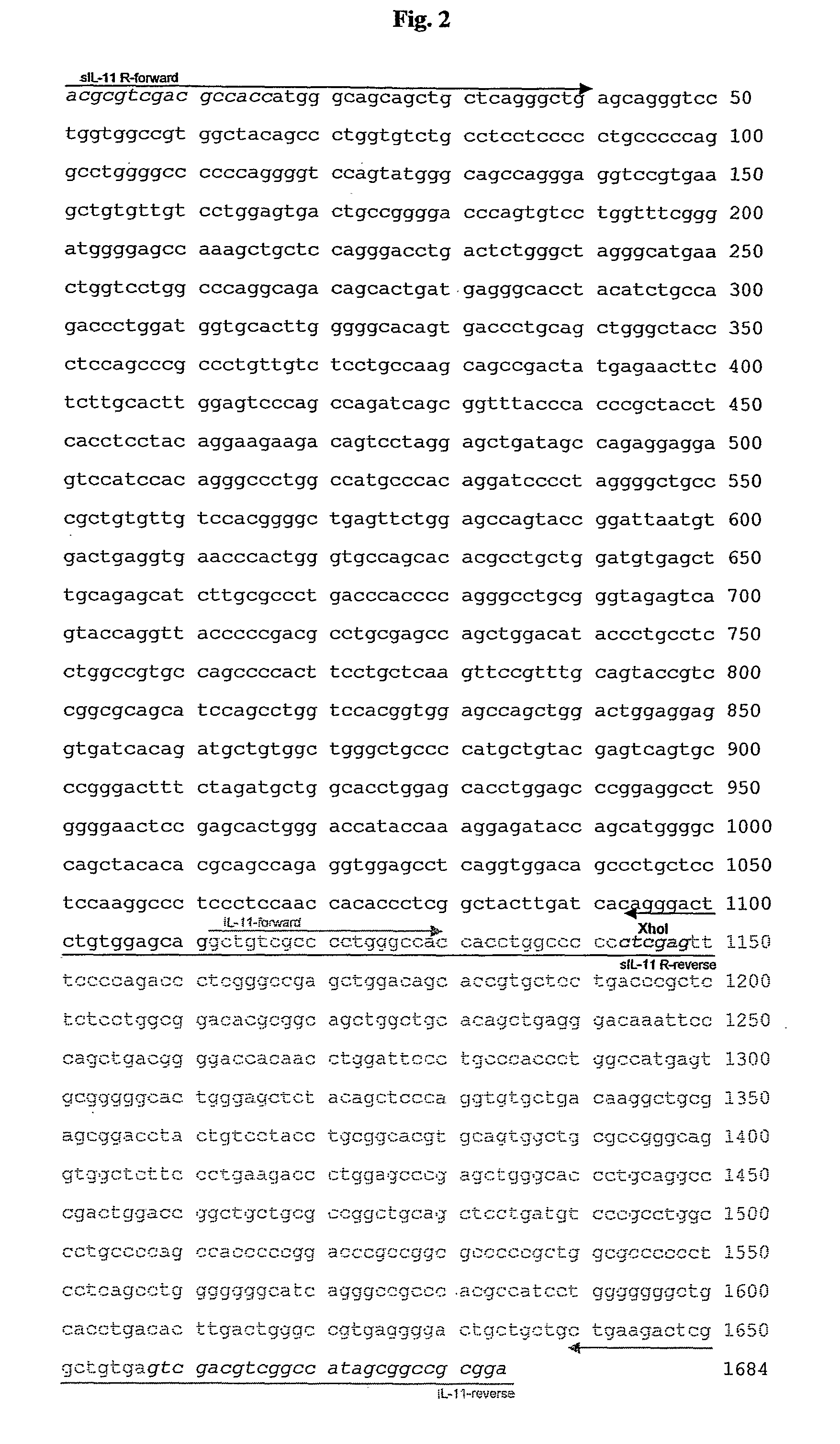Chimeric soluble hyper il-11 and use thereof
- Summary
- Abstract
- Description
- Claims
- Application Information
AI Technical Summary
Benefits of technology
Problems solved by technology
Method used
Image
Examples
example 1
Construction of a New Designer Cytokine Hyper IL-11 (H11)
[0158]The cDNA of human IL-11 (sequence position 55600 which corresponds to the amino acid residues 19-199) has been amplified by standard PCR reaction using following primers:
IL-11 forward:(SEQ ID NO. 7)5′ GCT GCT GCC CCT GGG CCA,IL-11 reverse:(SEQ ID NO. 8)5′ TCC GCG GCC GCT ATG GCC GAC GTC GAC TCA CAG CCGAGT CTT CAG.
[0159]The amplified fragment of IL-11 was cloned into pGEM-Teasy vector (Promega, Madison, Wis.). The cDNA of human IL-11 R (position 1-1095 which corresponds to the amino acid residues 1-365) has also been amplified by PCR reaction using forward primer containing a restriction site SalI and special reverse primer with extra sequence overlapping on 5′ sequence of IL-11 to the place where restriction site XhoI occurs. The sequences of used primers were:
sIL-11 R forward:(SEQ ID NO. 9)5′ ACG CGT CGA CGC CAC CAT GGG CAG CAG CTG CTC AGGGCT GsIL-Il R reverse:(SEQ ID NO. 10)5′ AAC TCG AGG GGG GCC AGG TGG TGG CCC AGG GG...
example 2
Production of Recombinant H11
Construction of Recombinant Donor Plasmid (FastBac1 / H11).
[0162]Plasmid pFastBac1 was used to generate viruses which express recombinant protein H11. pGEM-Teasy / H11 plasmid was digested with SalI / SphI restriction enzymes, purified fragment was then cloned into SalI / SphI restriction sites into pFastBac1 plasmid (Invitrogen Corporation, Carlsbad, Calif.) (FIG. 4).
Generating a Recombinant Bacmid by Site-Specific Transposition.
[0163]Generation of a recombinant baculovirus is based on site-specific transposition of an expression cassette into baculovirus shuttle vector (bacmid) propagated in E. coli.
[0164]The pFastBac1 / H11 plasmid was transformed into DH10Bac competent cells which contain the bacmid with a mini-attTn7 target site and the helper plasmid. The mini-Tn7 element on the pFastBac1 donor plasmid was transposed to the mini-attTn7 target site on the bacmid in the presence of transposition proteins provided by the helper plasmid. Colonies containing rec...
example 3
Construction of Retroviral Vectors DCCMV / H11 and MIHV / GM-CSF and Generation Recombinant Retrovirus Particles
[0168]The cDNA of H11 was digested with NotI restriction enzyme and purified fragment was cloned into NotI site of dicistronic double-copy retroviral vector (DCCMV) (Wiznerowicz et al., 1997). DCCMV's expression cassette placed in U3 region of 3′LTR contained CMV-IE promoter which drives the expression downstream H11 and Neo resistance genes. The steps of construction of DCCMV / H11 are shown in FIG. 5A.
[0169]Construction of MIHV / GM-CSF vector was performed by cloning of a murine GM-CSF cDNA excised by NotI digestion from pGEM-Teasy / mGM-CSF plasmid into NotI site of the MIHV retroviral vector (FIG. 5B)
[0170]The FIG. 5C shows retroviral vector MSCV / hIL-11 (Murine Stem Cell Virus) which was used as control in the study (gift from Dr. R Hawley, Toronto, Canada).
[0171]The DCCMV / H11 vector was transfected into amphotrophic packaging cell line (PA 317) via electroporation (250V / 104 ms...
PUM
| Property | Measurement | Unit |
|---|---|---|
| Fraction | aaaaa | aaaaa |
| Solubility (mass) | aaaaa | aaaaa |
| Immunogenicity | aaaaa | aaaaa |
Abstract
Description
Claims
Application Information
 Login to View More
Login to View More - R&D
- Intellectual Property
- Life Sciences
- Materials
- Tech Scout
- Unparalleled Data Quality
- Higher Quality Content
- 60% Fewer Hallucinations
Browse by: Latest US Patents, China's latest patents, Technical Efficacy Thesaurus, Application Domain, Technology Topic, Popular Technical Reports.
© 2025 PatSnap. All rights reserved.Legal|Privacy policy|Modern Slavery Act Transparency Statement|Sitemap|About US| Contact US: help@patsnap.com



